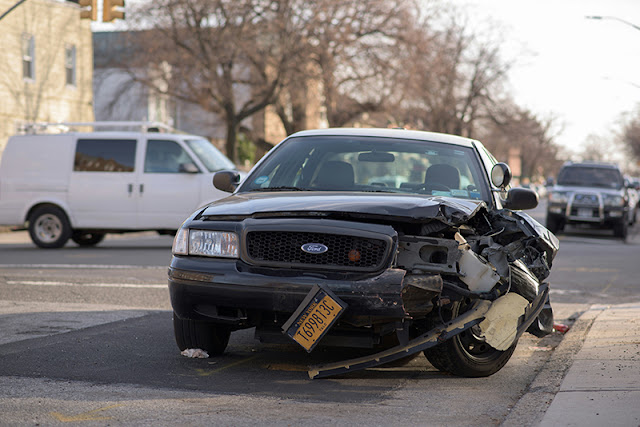Ever been in a hit-and-run accident and felt lost on what to do next? Knowing the steps to take after a motor vehicle collision can make all the difference. From gathering information to contacting authorities, being prepared is key. Stay calm, assess the situation, and follow these essential guidelines to ensure your safety and protect your rights. Ready to navigate through the aftermath of a hit-and-run with confidence?
Understanding Hit-and-Run Basics
Legal Implications
Hit-and-run incidents carry severe legal implications, with laws in place to ensure accountability for those involved. Fleeing the scene of an accident can result in criminal charges and hefty penalties.
Potential Consequences
The consequences of a hit-and-run extend beyond legal repercussions. Victims left behind may suffer physical injuries, emotional trauma, and financial burdens due to the irresponsible actions of the fleeing party.
Definition and Impact
A hit-and-run occurs when a driver involved in an accident leaves the scene without providing their contact information or offering assistance to the injured. This callous act can have devastating consequences for the victims, including delays in medical treatment and difficulties in seeking compensation.
Immediate Steps After the Incident
Secure Scene
Securing the scene after a collision is crucial to prevent further accidents or harm. This involves moving vehicles to a safe location if possible and turning on hazard lights.
Contact Emergency Services
Contact emergency services immediately after a motor vehicle collision. Reporting the incident promptly ensures that help arrives quickly, and necessary assistance is provided.
Stay at Scene
It is essential to stay at the scene of the collision until authorities arrive. Cooperate with law enforcement , provide accurate information, and do not leave prematurely.
Gathering Essential Information
Document Details
After a hit-and-run, gather essential information about the other driver and their vehicle. Note down the license plate number, make, model, and color of the car involved. This data is crucial for insurance claims and police reports.
Take Photographs
Capture photographs of the damages to your vehicle and the surrounding area. Include close-ups of any scratches, dents, or paint transfer. Visual evidence can strengthen your case during investigations.
Gather Witness Information
Collect witness information to support your case. Record names, contact details, and statements from anyone who saw the accident. Witnesses can provide valuable accounts that corroborate your version of events.
Bullet list:
Note down license plate number, make, model, and color.
Capture photographs of damages and surroundings.
Collect witness names, contact details, and statements.
Insurance Coverage and Reporting
Uninsured Motorist Coverage
Uninsured motorist coverage is crucial in hit-and-run incidents where the at-fault driver flees the scene. This coverage protects you when the other driver cannot be identified or lacks insurance.
In such cases, your uninsured motorist coverage can help cover medical expenses and vehicle damage. Contact your insurance company promptly to understand the specific details of your coverage.
Filing a Claim with Your Insurance Provider
After a hit-and-run incident, it's essential to file a claim with your insurance provider swiftly. Provide all relevant details, including the date, time, and location of the collision.
When filing a claim, ensure to include any information gathered from the previous section, such as witness statements and photographs. This information can strengthen your case and expedite the claims process.
Collision Insurance Coverage for Vehicle Damage
Collision insurance can assist in covering vehicle damage resulting from a hit-and-run accident. This type of coverage is especially beneficial when the at-fault driver cannot be located or does not have insurance.
Contact your insurance company to initiate the collision insurance claim process. Be prepared to provide documentation such as estimates for repairs and any supporting evidence from the scene of the collision.
Legal and Financial Implications
Legal Consequences
Leaving the scene of a hit-and-run can lead to severe legal consequences. It is considered a criminal offense in most jurisdictions, punishable by fines, license suspension, or even imprisonment. Failure to stop and provide assistance can escalate the charges against you.
Understanding the importance of staying at the scene after a collision is crucial. By complying with legal obligations, you demonstrate responsibility and respect for the law. This not only protects your interests but also upholds justice for the affected parties.
Financial Impact
Victims of hit-and-run incidents often face significant financial implications. From medical expenses to vehicle repairs, the costs can quickly add up. Without proper insurance coverage or identification of the responsible party, victims may struggle to recover their losses.
Seeking financial compensation through legal channels is essential for hit-and-run victims. By pursuing legal action against the perpetrator, victims can recover damages and alleviate the financial burden caused by the collision.
Steps to Protect Your Rights
After a hit-and-run collision, taking immediate action is crucial. Contacting law enforcement to report the incident and seeking medical attention are vital steps to ensure your safety and well-being. seeking legal assistance from experienced professionals can help navigate complex legal procedures and maximize your chances of receiving compensation.
Final Remarks
After understanding the basics of hit-and-run incidents, learning the immediate steps to take after an accident, gathering essential information, delving into insurance coverage and reporting requirements, and considering the legal and financial implications, you are now equipped to navigate through the aftermath of a hit-and-run collision. Remember, staying calm and following these steps can make a significant difference in handling such a stressful situation. By being prepared and informed, you can protect yourself and your interests in the event of a hit-and-run incident. Stay vigilant, stay informed, and stay safe on the roads.
Frequently Asked Questions
What are the key steps to take after being involved in a hit-and-run incident?
After a hit-and-run, ensure your safety first, call emergency services, gather information from witnesses and the scene, document the damage, and report the incident to the police and your insurance company promptly.
Is it important to understand the legal and financial implications of a hit-and-run situation?
Understanding the legal and financial consequences is crucial. Hit-and-runs can lead to criminal charges, license suspension, civil lawsuits, and financial burdens. Being informed helps you navigate these complexities effectively.
How does insurance coverage work in hit-and-run cases?
In hit-and-run cases, uninsured motorist coverage typically applies if you have it. This coverage helps pay for damages when the at-fault driver cannot be identified or is uninsured. Contact your insurance provider to understand your specific coverage details.
Why is gathering essential information after a hit-and-run incident necessary?
Collecting details like the other vehicle's make/model, license plate number, location/time of the incident, and eyewitness accounts can significantly aid law enforcement in identifying the responsible party and support your insurance claim.
What immediate steps should I take right after being involved in a hit-and-run accident?
Immediately after a hit-and-run incident, prioritize safety by checking for injuries and contacting emergency services. Take photos of the scene and any damage, note down details like time and location, and inform both the police and your insurance company promptly.








0 Comments